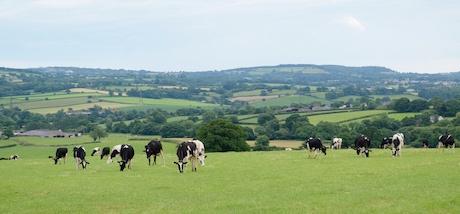
By Aarti Ramachandran — As global leaders convene in Bonn in Germany for COP23, there's a chance to keep the world on track to achieve the 2015 Paris Agreement to limit global warming to well below two degrees.
At the heart of these talks is each country’s plan to reduce its emissions, formally known as its Intended Nationally Determined Contribution (INDC). The INDCs single out 79 different industries, yet from America to Australia, not a single developed country includes a concrete plan to tackle livestock emissions.
Given that the livestock industry is responsible for approximately 14.5% of total greenhouse gas emissions – more than the entire transport sector – that is a remarkable and regrettable finding. Without a plan to tackle livestock emissions, the world will fall well short of the 2-degree target.
Without livestock, we’re veering off course from 2 degrees
Recent analysis from the investor network FAIRR highlights that the ten developed countries with the largest-emitting agricultural sectors include the USA, New Zealand and the UK. The agricultural sectors in these ten countries collectively emit greenhouse gases equivalent to consuming 1.6 billion barrels of oil each year (around4.5% of worldwide average demand). Agriculture is responsible for over 870,000 gigagrams of greenhouse gases per year; livestock accounts for approximately 62% of these emissions.
The Paris Agreement places a particular duty on developed nations to act, given that they are responsible for the vast majority of industrial emissions to date. These countries are also the main drivers of what has become an unsustainable demand for animal protein. So it is right for investors to put the onus of leadership on these countries when it comes to creating a more viable supply of protein for the world’s dietary needs.
Encouragingly there are signs of progress. More people in Europe and North America are embracing plant-based diets for health and environmental reasons. For example, a recent Nielsen survey found that 39% of Americans and 43% of Canadians are actively trying to add more plant-based foods into their diets, and the proportion is growing. There is also exciting innovation in the plant protein sector, with brands such as Beyond Meat and Impossible Burger now on the market.
Plant-based food sales grew by over 8% this year, to top $3 billion in sales. Meanwhile, plant-based milk sales continue to grow at 3%, compared to cow’s milk, which declined by 5% in the last year. Some of the world’s largest processors of meat such as Tyson Foods and Cargill are expanding their protein business with investments in the plant protein and cultured meat space.
Slowing a surging demand in Asia
Asian meat demand is predicted to grow 19% between 2013 and 2025, reaching 144 million tonnes. This would create GHG emissions equivalent to running approximately 100 new coal fired power plants.
There is clearly an onus on the richest nations to take action; at the same time, it is vital that developing countries reduce their livestock emissions. As economies grow, their food production must not follow the same unsustainable path as the West. Which is why policy makers in the developing world must also step up to develop domestic food production systems that fill the current protein gap with sustainable protein sources.
Getting livestock on the climate agenda
It’s been two years since Paris fired the starting gun on the low carbon transition. Most of the attention so far has been focused on highly polluting industries like energy and transport and on clean technology innovations such as solar panels and electric vehicles. It’s time to broaden this focus.
If we’re serious about tackling climate change, delegates at COP23 must put cows alongside cars on the climate agenda.
Aarti Ramachandran is Head of Research & Corporate Engagement at the FAIRR Initiative














